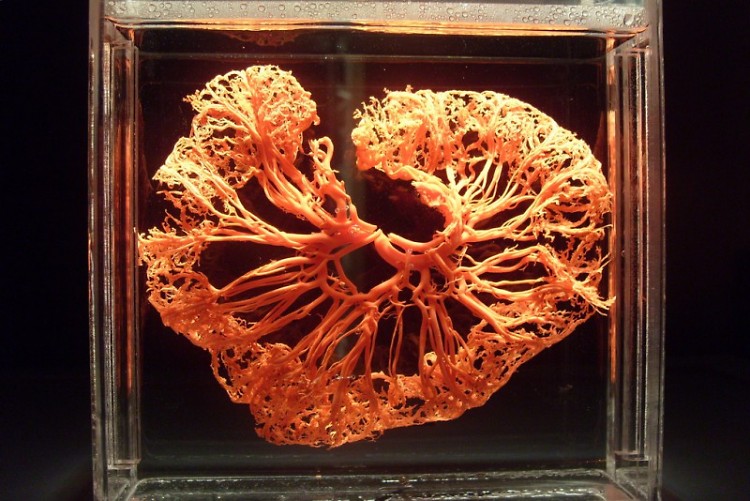This article was written and edited by David Fortuna, Tanisha Hill, Joe Sagorski, Craig Scougale, and Jose Torres for EN 102-1593 at GRCC.
Grand Rapids is considered by some to be a dying city, but these days the city is gaining attention from those interested in preserving life. With the influx of organizations such as the Van Andel Institute, Michigan State University College of Human Medicine, and the recently opened Helen DeVos Children’s Hospital on the Medical Mile, day by day, disease and death are conquered through investigation and use of technology. Recently, Grand Rapids has seized the opportunity to add an impressive exhibition called “Bodies Revealed” to its medical scene. This exhibit at the Grand Rapids Public Museum can be viewed until May 1st for fifteen dollars. Discounts apply to students and members of the museum.
“Bodies Revealed” allows Grand Rapidians to learn more about how the body works. There are 14 preserved bodies which are prevented from decay by a rubberizing process patented in the 1970’s by anatomist Gunther von Hagens. The bodies in the exhibit were preserved by removing the water and fatty material from the cells and replacing it with plastics such as silicone, rubber, polyester or epoxy resin. These “rubberized” bodies are displayed in unique poses to show every element that goes into a simple movement. For example, one body was pitching a baseball to another holding a bat ready to swing. The bodies are exposed in an artistic way, giving the impression of movement. Some of them are dissected in layers giving a tri-dimensional feeling.
Complete adult bodies are not the only things “revealed.” Over 200 human organs are displayed throughout this exhibition, providing education and knowledge to those who are not involved in the healthcare field. The exhibit also shows human fetuses in their developmental stages. Human lungs on display show what it looks like when someone has lung cancer, emphysema, or what they look like when a person regularly smokes. The exhibit even includes bodies with medical joint replacements and medical prostheses still in place.
The staff and volunteers who help run the event are professional and knowledgeable, interacting with visitors and answering questions. At the digestive system station visitors were asked by a volunteer “Do you want to feel the texture of this organ?” She handed out a tough and slippery thing, stating, “You are holding a human stomach,” then gave us a short description of its location and functions. When asked whether she had a degree in the medical field, she replied, “No, I don’t, but I have been volunteering to the Museum for the past ten years.” She also added that at a personal level the event is “excellent and the response that people show is great.”
Grand Rapids is not the first city to host this exhibit. It first opened in 2005 in Tampa Bay, Florida and has traveled all over the United States since then. “Bodies Revealed” has also been to various countries including Canada, Colombia and Spain. The bodies themselves have been an on-going source of controversy. According to some, these bodies were prisoners that were executed by the Chinese government, but this claim has not been verified. The organizers of “Bodies Revealed” have insisted that the bodies were donated to science, and that the exhibit does them justice by helping to educate others about human anatomy and physiology the way only a real human body can. Although this exhibit might be controversial, it is extremely educational and interesting. If you haven’t already, take advantage of this unique opportunity to view it before it moves on to a different location.
The Rapidian, a program of the 501(c)3 nonprofit Community Media Center, relies on the community’s support to help cover the cost of training reporters and publishing content.
We need your help.
If each of our readers and content creators who values this community platform help support its creation and maintenance, The Rapidian can continue to educate and facilitate a conversation around issues for years to come.
Please support The Rapidian and make a contribution today.

